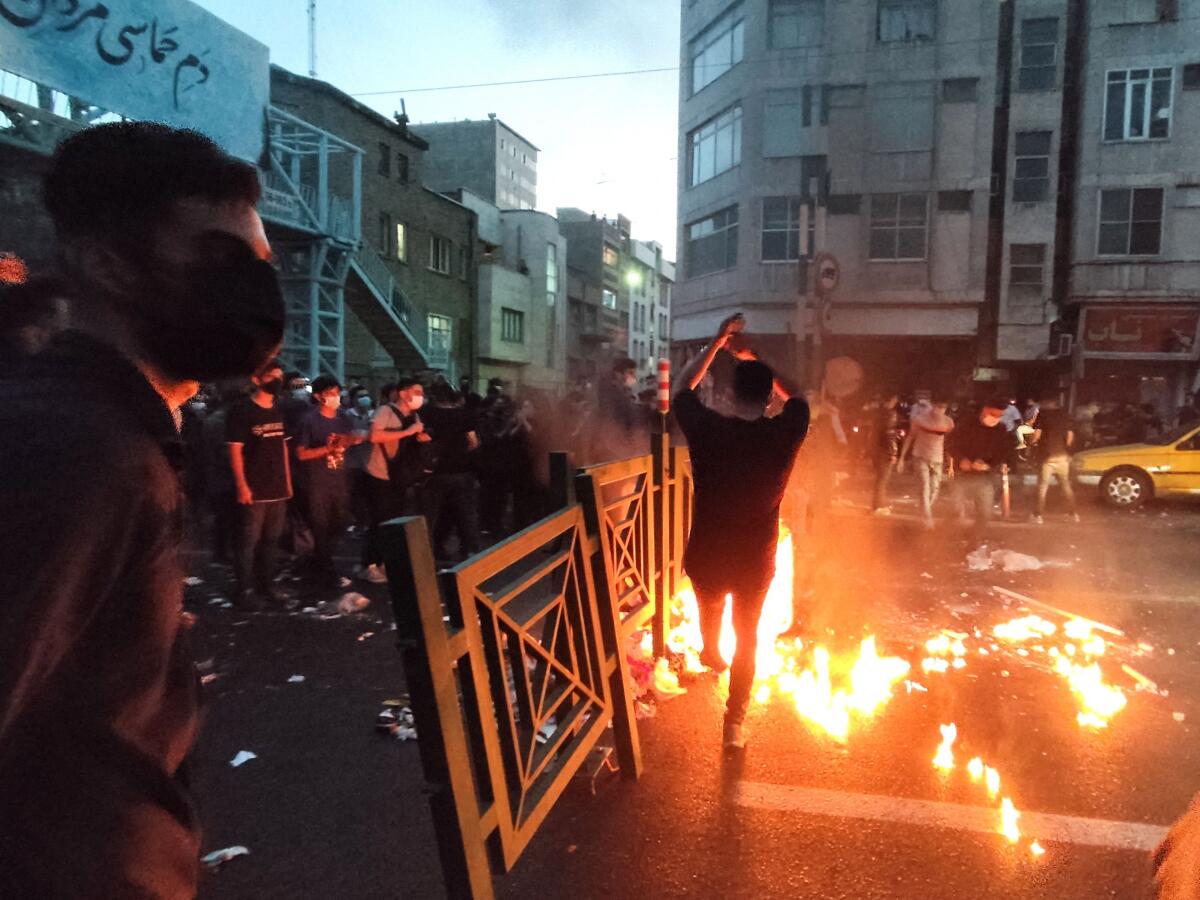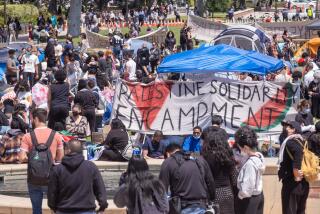Column: The hijab is rallying protesters in Iran, but the unrest is about so much more

- Share via
I once spent a week in a region of southern Sudan where almost none of the women covered their breasts, and then just two weeks later I flew to Iran, where women are required by law to cover their hair with hijabs as a sign of modesty.
It was a stark reminder of how cultures are different, laws vary and rules about women’s behavior are shockingly arbitrary. I began to wonder why we in the West think our own modesty standards are any more appropriate than anyone else’s.
For a while after that trip, I felt that hijab rules like the ones I’d seen enforced in Iran were no more outrageous or illogical than our own cover-up rules on main streets and public beaches.
It took me a while to realize I was totally missing the point.
Opinion Columnist
Nicholas Goldberg
Nicholas Goldberg served 11 years as editor of the editorial page and is a former editor of the Op-Ed page and Sunday Opinion section.
Of course it is puritanical, paternalistic and sexist for any government to tell women how to dress — in the U.S., the Middle East or anywhere else. But in Iran, the hijab laws are about more than just the hijab, and protests against the hijab rules are a protest against something much broader.
In the current unrest, which has been underway for three months, the hijab — the mandatory hijab, that is — should be seen at least partly as a proxy, the tangible symbol of all manner of societal discontents, including a broad lack of freedom, the government’s assault on individuality and bodily integrity, the overreach of religion, the denial of self-determination.
Certainly the protests were sparked by the country’s outrageous head scarf laws — and specifically by the horrific mid-September death of Mahsa Amini, a 22-year-old woman who died in police custody after being arrested in Tehran for allegedly wearing her hijab improperly.
But in the months since Amini’s death, the protests have grown and spread, becoming a much more generalized howl of discontent against the government. Some 18,000 people have been arrested in protests in scores of cities. Human rights organizations count more than 400 people killed by Iranian security forces.
Two protesters have been executed this month. One was accused of stabbing two members of a paramilitary force; he was bound at the hands and feet, with a black bag placed over his head, and hanged from a construction crane. Both executions lacked due process and may have relied on coerced confessions.
As many as a dozen more protesters are on death row. Lawmakers have called for no leniency, saying chaos must not be tolerated, although the government also appears to be carefully calculating how severely it can afford to crack down. The authorities have blamed foreign governments for fomenting the unrest.
Demonstrators commemorated those killed in a bloody crackdown in southeastern Iran 40 days ago in which activists say 100 people died.
Though the uprising began over head scarves, protesters these days are shouting full-on anti-regime slogans and anti-clerical chants. They’re burning hijabs, but they’re also burning images of Supreme Leader Ali Khamenei and shouting, “Death to the dictator.” The protests reflect the expanding rift between the people and the government. “Woman, life, freedom” is not just about women’s issues — it’s also about censorship and liberty, and it’s an outpouring of unhappiness from alienated young people who’ve seen living standards decline and economic grievances mount.
The revolt may be crushed, or it may fizzle out, as previous uprisings did in 2009, 2017 and 2019. But it’s clear the demonstrators’ complaints won’t be satisfied by minor tweaks to the head scarf rules, at least not for long.
The sclerotic government under Khamenei, an 83-year-old ayatollah who has offered no clear plan for succession or reform, had better watch its step.
Why and how did the hijab become such a potent symbol for such a powerful uprising? Partly it’s Amini’s death, but it’s also that the head scarf is such a blunt and unsubtle reflection of the regime’s determination to control its citizens.
The hijab laws reflect the theocratic leadership’s bizarre obsession with chastity and purity and micromanaging the sexual behavior of men and women. They are justified by the religious authorities on the grounds that women shouldn’t become a sexual distraction to men.
Many Muslim women wear the hijab voluntarily. That’s their right, of course. But Iran is one of very few countries that requires all women to cover their heads in public. Some countries have repealed or loosened their head scarf requirements.
Iranian protesters forming alliances across the political spectrum could signal a new vision for the country.
The hijab wars in Iran go back at least to 1936, when then-leader Reza Shah Pahlavi banned head scarves in certain public places. Even then, the hijab — or rather the lack of one — was a stand-in for “modernization” and “Westernization.” His decree, which survived for only a few years, outraged conservative clerics, and many traditional, religious Iranians as well. (In that period, some women reportedly had head scarves physically ripped from their heads.)
During the 1970s, in the years leading up to the Iranian revolution, wearing a hijab became a sign of opposition to the monarchy.
Then, in a turnabout after the 1979 revolution, thousands of women took to the streets to oppose mandatory head scarf rules, in what were the first protests against the new regime.
The hijab has sometimes been downplayed as the least of women’s concerns in a country that often requires them to have a man’s approval for travel, and where inheritance and marriage laws generally favor men.
But as the protests enter their fourth month, the hijab has demonstrated once again its symbolic — and substantive — power.
On Wednesday, the United Nations voted to remove Iran from the Commission on the Status of Women, for whatever that is worth. U.S. national security advisor Jake Sullivan denounced the executions and other Iranian “atrocities.” Economic sanctions have been tightened.
In the end, though, it is the Iranian people — and the depth of their anger and their willingness to keep fighting against the state — that will determine how far this goes.
More to Read
A cure for the common opinion
Get thought-provoking perspectives with our weekly newsletter.
You may occasionally receive promotional content from the Los Angeles Times.














